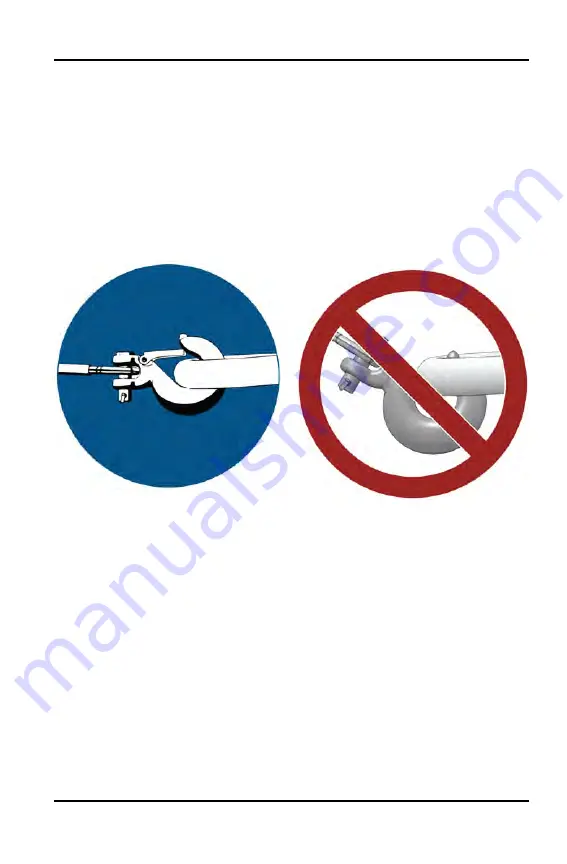
• If possible, keep the winch cable aligned with the centerline of the winching
vehicle. This will help the spooling of the winch cable and reduce the load on
the fairlead.
• If freeing a stuck vehicle by attaching to a tree, use an item such as a tow
strap to avoid damaging the tree during winch operation. Sharp cables and
chains can damage and even kill trees. Please remember to TreadLightly®
(treadlightly.org).
• Before operating the winch, be sure that the safety latch on the winch cable
hook is fully seated when the load is attached.
• Never operate your winch with a damaged hook or latch. Always replace
damaged parts before using the winch.
5. Never remove the hook strap from the hook.
6. Release the winch clutch and pull out the winch cable.
7. Pulling out as much cable as possible maximizes the winch’s pulling
capacity. Always be sure that at least five (5) full turns of winch cable are
wrapped around the winch drum at all times. The friction provided by this
wrapped cable allows the drum to pull on the winch cable and move the load.
8. Read and adhere to the following information for winch damping to ensure
safe winch use.
a. In order to absorb energy that could be released by a winch cable failure,
always place a “damper” on the winch cable. A damper can be heavy
jacket, tarp, or other soft, dense object. A damper can absorb much of the
energy released if a winch cable breaks when winching. Even a tree limb
can help as a damper if no other items are available to you.
b. Lay the damper on top of the mid-point of the winch cable length that is
spooled out.
101















































